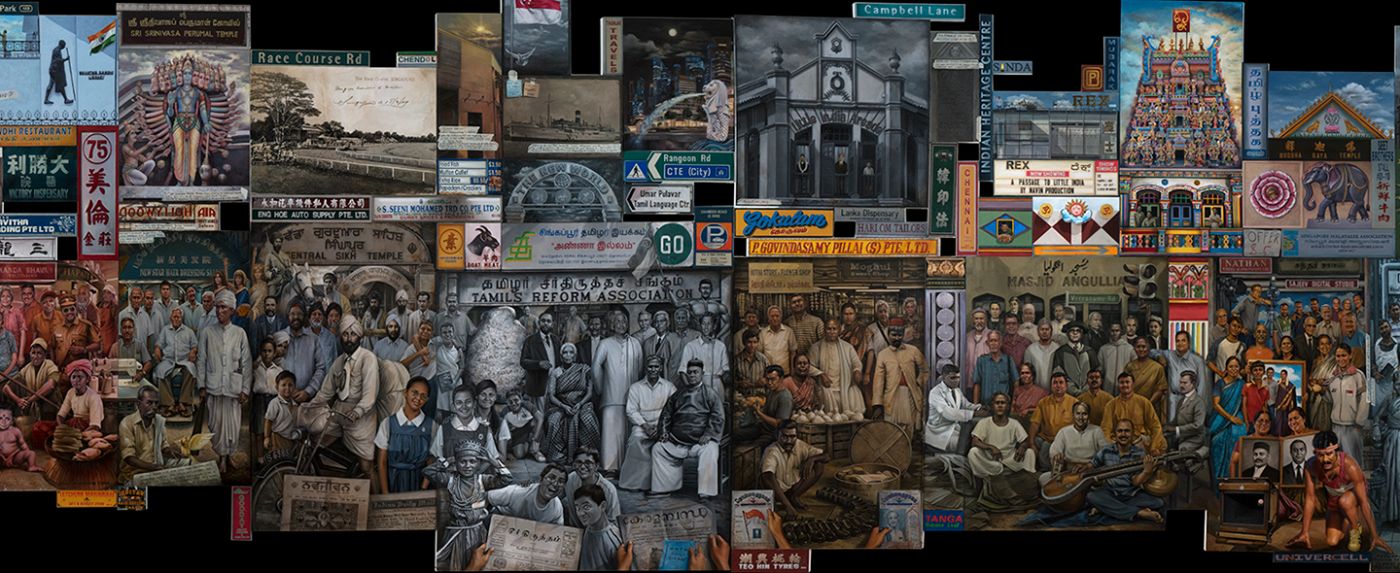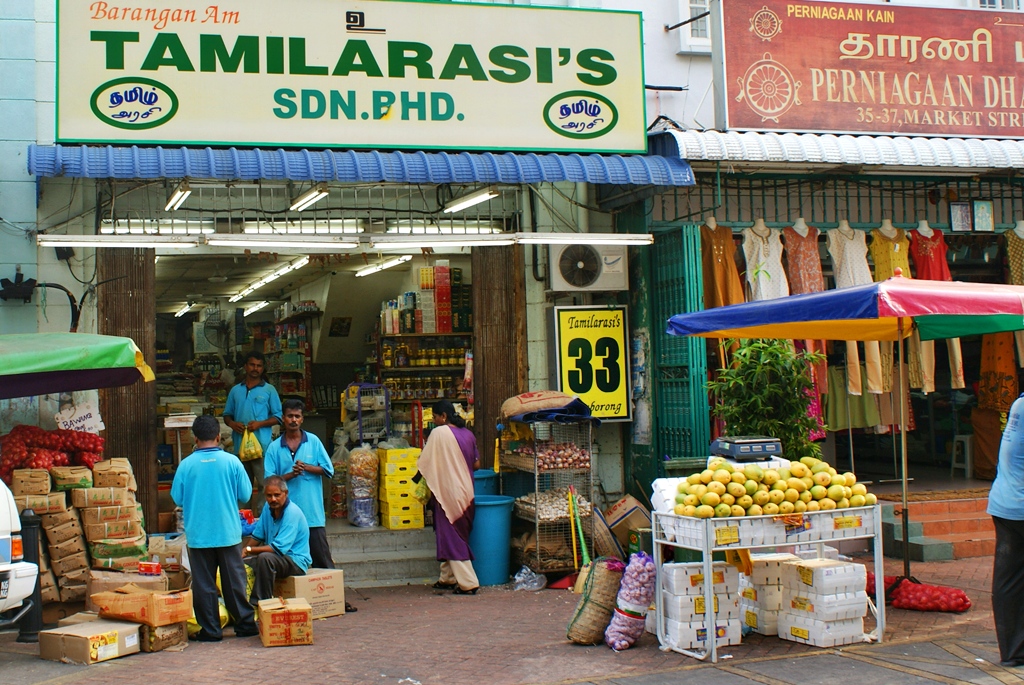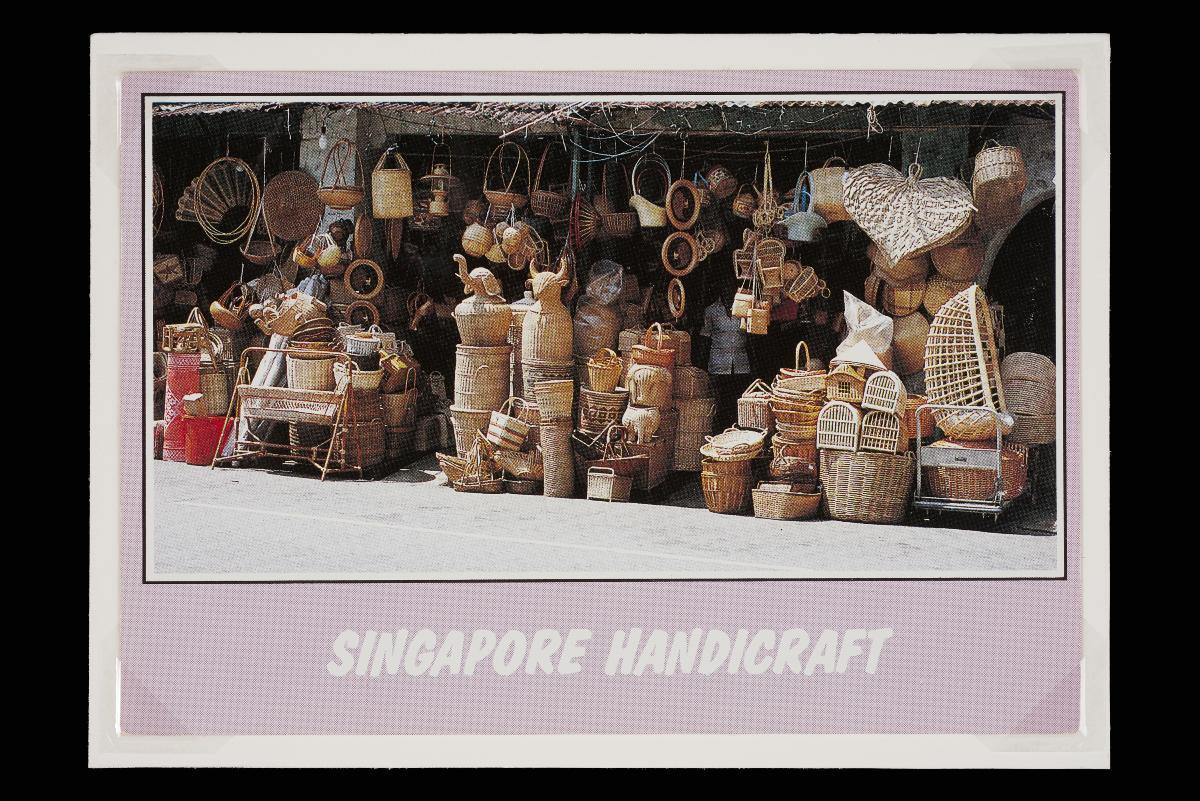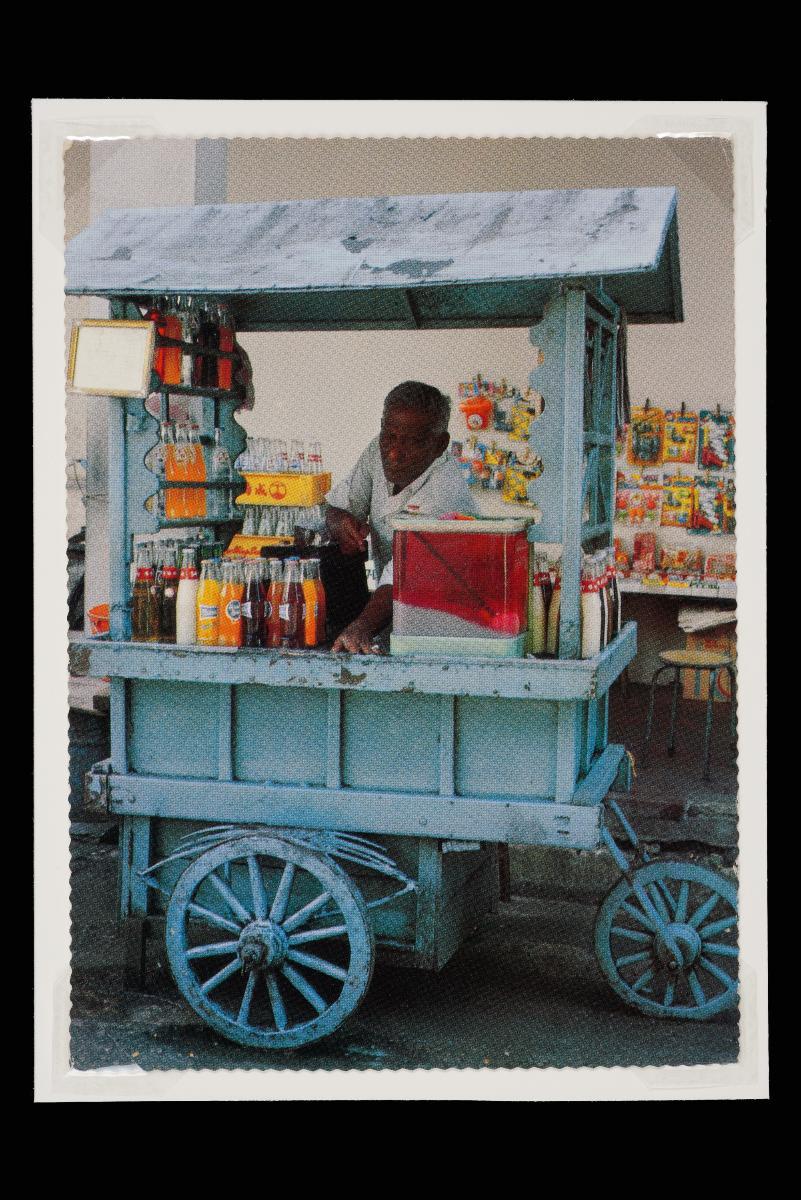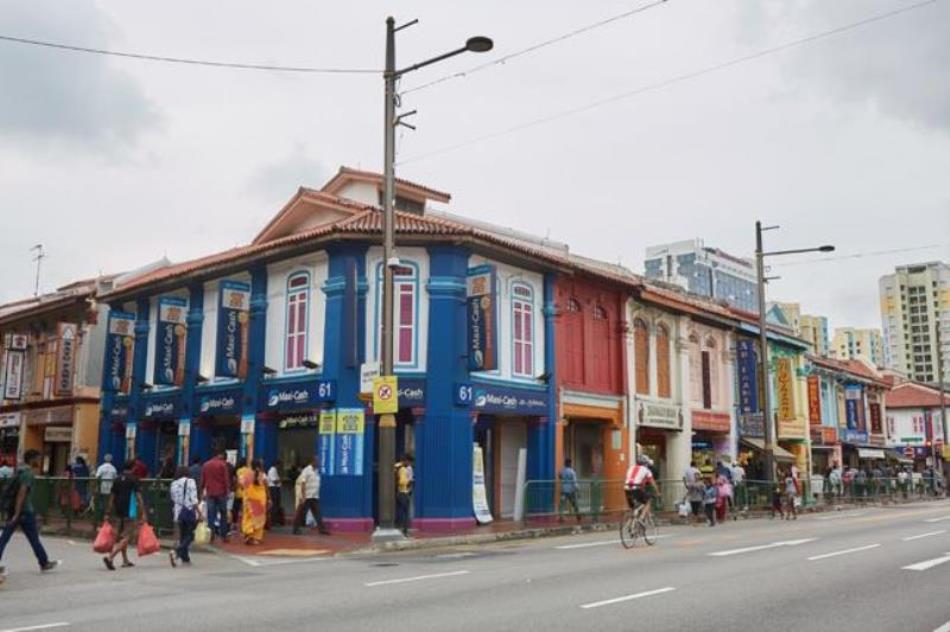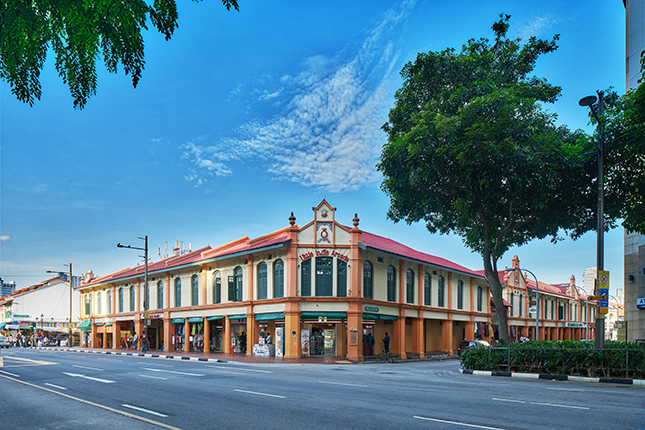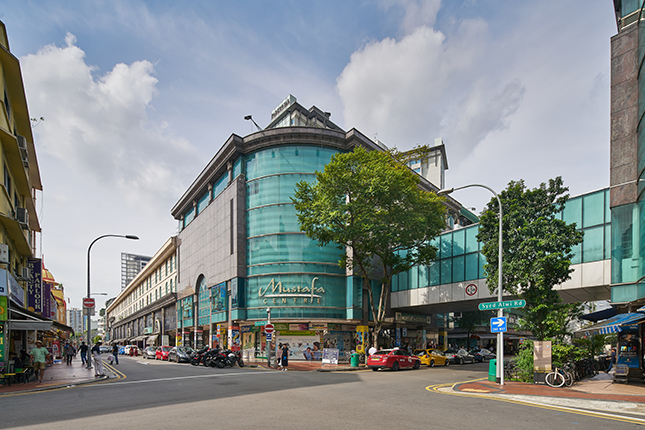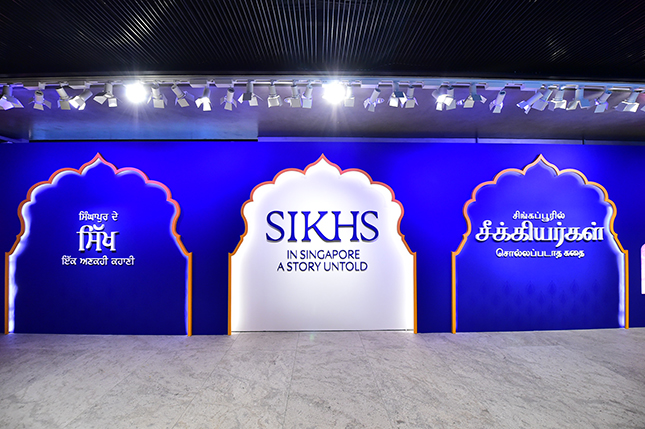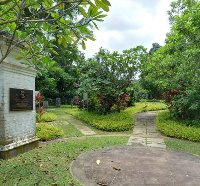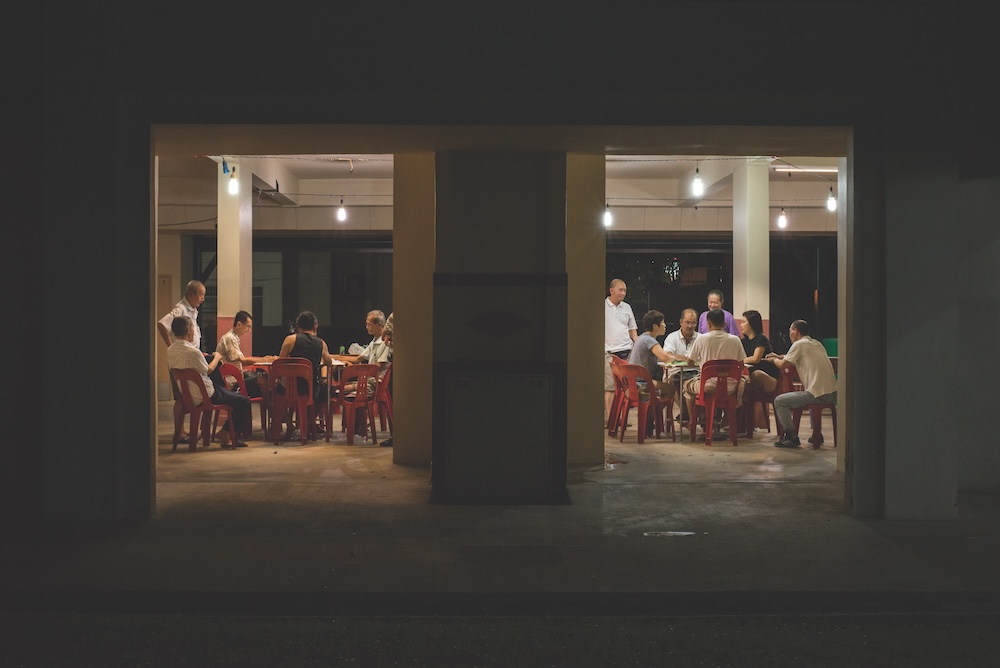Across the world, the epithet “Little India” has come to connote an enclave or a microcosm with a concentration of Indian and South Asian communities. It is a locale that mirrors the cultural diversity of the migrant community; a focal point for immigrants in search of kinsmen and communal interaction; and a symbol of transnational identity and ethnic consciousness.
The Indian Heritage Centre’s Once Upon a Time in Little India special exhibition told the story of Singapore’s Little India through historical and contemporary lenses using archival images, historical artefacts and contemporary art. It also examined congregations in Indian community spaces around Singapore from the early 19th to the late 20th centuries, and surveyed similar settlements across many parts of the world as symptomatic of global movements of the Indian and larger South Asian diasporas.
The exhibition, as a parallel project of the Singapore Biennale 2016, also featured three contemporary art installations which were commissioned by the Indian Heritage Centre for the exhibition and are reflective of the artists’ experiences or memories of Little India.
This digital archive of the Once Upon a Time in Little India exhibition features ten stories presented in the exhibition. The exhibition has also been catalogued in the publication Once Upon a Time in Little India published by the Indian Heritage Centre.
Around the World
The Indian diaspora is the complex product of large scale movement and settlement during the 19th and 20th centuries as a result of colonial migration and post-colonial dispersion although Indians were engaged in trade and cultural exchanges with the rest of the world since pre-colonial times. Today, the Indian diaspora is estimated at over 28 million and comprises the former labour workforce of the colonial era to the information technology, financial and transient workforce of present times.
As the Indian community migrated and settled across different parts of the world, they brought with them ideas and concepts, values and beliefs, social and cultural norms. The concept of a “Little India” as a microcosm of Indian culture also travelled with the diaspora. Embodied in ethnic enclaves found in many parts of the world, these Little Indias of the world offer everything Indian from food to fashion, art to music, film to faith etc.
A mapping of the global Indian diaspora across the world is presented here. Some of the more well known examples of Indian settlements around the world are found in Canada, Fiji, Guyana, Indonesia, Mauritius, Malaysia, Myanmar, Singapore, South Africa, Sri Lanka, Suriname, Trinidad and Tobago, the UK and the USA.
Around Singapore
In Singapore, the earliest concentration of Indians was the Indian Sepoy lines located at the foot of Fort Canning Hill and its surroundings. Between 1819 and 1867, Indian settlement was concentrated within the Singapore Town area, with spillage onto the Serangoon Road area.
In addition to the above settlements there were other areas of congregation which were closely linked to the occupations of the Indian community. For instance, the Chulia kampung (known as Kling Street and later as Chulia Street) and Market Street areas were areas of congregation for early traders and private financier communities.
Dhoby Ghaut, as the name suggests, was likewise a place where Indian washermen at the Stamford Canal area converged and congregated, while port and railway workers could be found at Tanjong Pagar and textile merchants at High Street and Arab Street. Sembawang was another area where Naval Base employees lived and worked as late as the 1960s.
Over time, most of the aforesaid areas evolved and underwent dramatic transformations as the nation progressed. With the exception of Serangoon Road, these areas no longer bear any evidence of Indian settlement today.
The Little India Precinct
Bounded by Serangoon and Sungei Roads and Jalan Besar, the Little India precinct spans 13 hectares and is home to 900 conserved buildings. The precinct’s arterial thoroughfare, Serangoon Road, is one of the earliest roads built in Singapore. During the 19th and early 20th centuries, the precinct was associated with agricultural activity, brick making, lime quarrying and cattle rearing. The Indian community started to settle in the area back in the 1820s when they were employed to work at the brick kilns and later in the cattle trade. During the 1840s, the construction and operation of the Race Course attracted more members of the Indian community to settle and work in the area.
Despite the predominance of the Indian community, the Little India precinct was also a reflection of Singapore’s cosmopolitan society as Europeans, Eurasians, Chinese and Malays also establishedbusinesses in the area. The precinct’s ethnic diversity is perhaps best reflected in its diverse street names which include Sunnambu Kambam (“lime village” in Tamil), Kandang Kerbau (“cattle pens” in Malay) and Nan Sheng Hua Yuen Pien (“Fringe of Garden in the South” in Mandarin).
The settlement of the Indian community started from Dhoby Ghaut and Selegie Road at one end, spanned Serangoon Road and ended at Potong Pasir. It also included other peripheral areas such as Balestier Road. From the years following World War II to the present, the Little India precinct has transformed itself into a commercial centre catering to the needs of the Indian community.
Albert Street
Albert Street was once the location for Theemithi (or “fire walking” in Tamil) which is one of the two oldest Hindu festivals in Singapore. The street was known as Thimiri Thidal (or “the place where people tread on fire” in Tamil) to Indians. In 1870, Theemithi was relocated to the Sri Mariamman Temple at South Bridge Road.
The festival was introduced in Singapore by the caulker community, who specialised in boat building and who traced their roots to the seaside Cuddalore and Poigainallur areas in South India. They brought with them the cult of Draupadi, a Tamil folk goddess associated with the Mahabarata, an Indian epic. They owned businesses along the Kallang River and lived in the Jalan Sultan and North Bridge Road areas. To this day, the caulker community remain closely associated with the Sri Mariamman Temple.
"They managed the fire pit, the firewalking ceremony, and the physical act of starting the fire…all were managed by members of the boat caulkers’ community."
– As recounted by Soundara Rajan to the National Archives for Communities of Singapore on 17th December, 1987
Sunnambu Kambam
In the 19th century, due to the location of government lime pits and brick kilns, the Serangoon Road area was known as Sunnambu Kambam or Kampong Kapor (“lime village” in Tamil and Malay respectively). The Sri Veeramakaliamman Temple, built in 1855, was originally called the Sunnambu Kambam Kovil (“Lime Village Temple” in Tamil) and patronised mainly by daily rated workers. The temple’s trustees were mandores (“overseers” in Malay) and included Govinda Mandore and MK Andiappa Mandore.
The Sri Narasingha Perumal Temple (now known as Sri Srinivasa Perumal Temple) was also built in 1855, by Vaishnavite (followers of Vishnu) merchants. By 1907, the temple came under the administration of the Mohammedan and Hindu Endowments Board. As a result of its spacious grounds, the temple was the site for Thaipusam celebrations and devotees would assemble their kavadis on these grounds before walking to the Sri Thendayuthapani temple at Tank Road.
"The temple is the most important structure among all temporal things needed for social order in a socially constructed society (the uur or “village”). Buffalo Road and Norris Road, falling into the geographical framework of the ‘uur’ had the Kaliamman temple as its centre. The temple was referred to as the Sunnambu Kambam Kaliamman Koil (“the Kali temple at the lime kiln village” in Tamil). Over time, the area attractedmore Indians, especially the Tamils.”
– As narrated by A Mani in A Tale of Two Streets: Urban Renewal, Transnationalisation and Reconstructed memories
Published In Enchanting Asian Social Landscapes
Thannir Kambam
Thannir Kambam (“Water Village” in Tamil) comprises the Balestier area from where water was sent to town for sale. The Thannir Kambam Kovil or Vadapathira Kaliamman Temple was established by Tamils living in Potong Pasir and later handed over to the management of B Govindasamy Chettiar, the proprietor of Indian Labour Company and, subsequently, to his son-in-law SL Perumal. Located at the junction of Serangoon Road, Balestier and Race Course Road, the temple and its wells were frequented by Indians in the surrounding areas.
The area was also known as Recreation Road to Europeans due to the number of recreation clubs located in the vicinity. The Singapore Indian Association, the Ceylon Sports Club and the Khalsa Association at the Balestier Plain organised sporting activities and social gatherings while the former Kamala Club was a premier institution for South Asian women.
Desker Road
Desker Road was named after Andre Felipe Desker, better known as Henry Desker, one of Singapore’s first butchers. Desker was an Eurasian of Portuguese descent and his butchery was situated between Norris Road and Veerasamy Road. He also owned properties between Cuff Road and Sungei Road.
The Desker family had strong associations with the St. Joseph’s Church at Victoria Street and Henry Desker and his son Hermogenes Desker (better known as Armenisgild Stanislaus Desker) were active in the Church’s leadership and donated generously to major Catholic institutions.
For Sale Mutton
"The undersigned have this day commenced business as Butchers, intending to furnish the residents with a regular supply of the best Mutton; they will keep constantly on hand a large stock of Gram fed, Bengal and Patna, Sheep and can therefore supply promptly all orders with which they may be favoured. Circulars will be sent round regularly.
– Desker & Co.
Singapore, Serangoon Road, 1st June, 1865
As published in The Straits Times, 13th November, 1865
Kandang Kerbau
Kandang Kerbau (“cattle pens” in Malay) was the name given to the buffalo settlement established in 1835 on Serangoon Road. Buffalo Road, Kerbau Road and Kerbau Lane, and Lembu Road are place names that point to the presence of cattle trade in the area. Cattle traders such as IR Belilios, a Venetian Jew, and Moona Khader Sultan, a Tamil Muslim from the French territory of Karaikal were well known personalities in the area.
The erstwhile Kandang Kerbau (or KK) Market (now Tekka Market), the KK Police Station, KK Hospital and KK Post Office were important landmarks in the area. In the mid-20th century, the road was filled with traditional goldsmiths from South India. It was also the location of the residences of the “toddy king” and contractor O Ramasamy Nadar. VK Kalyanasundaram of Thiruvarur also started his textile business at Buffalo Road and later owned stores at Dunlop Street and Serangoon Road before closing down in the late 1980s.
"A couple of months ago I went to Serangoon Road, where Tekka Market—a sprawling structure—was abuzz with activity. The colour was breath taking, as customers haggled over prices, prodded the merchandise and complained sorely about the rising cost of living. It looked like sheer mayhem. But that was the way it had always been—alive.”
– As described by Kannan Chandran in “Taking a long, lingering look at what we gave up”
Published in The Straits Times, 17 July, 1981
Campbell Lane
Campbell Lane has borne witness to the beginnings of several veteran Indian entrepreneurial giants. P Govindasamy Pillai, widely known as PGP, was a successful businessman and owner of the landmark PGP stores, the first of which was established at Campbell Lane. When he first arrived, PGP was attached to Gnanapragasam Pillai, who was a spice and grain trader from Pondicherry with businesses located at 44 and 46 Serangoon Road.
PGP was a Justice of the Peace, a founder member of the Indian Chamber of Commerce and a well-known philanthropist who donated to temples including the Sri Srinivasa Perumal Temple. During the 1960s, enterprising peddlers such as Mustaq Ahmad (now Managing Director of Mohammed Mustafa & Samsuddin Co); OK Mohamed Haniffa (now Chairman of Haniffa Textiles); and Ramachandra Murugaia (now proprietor of Jothi Flower Shop) also set up their respective textile and flower selling businesses along Campbell Lane.
"They were very prominent business people in Little India in those days. Everyone knew who PGP was. They were (dealing in) very fine textiles. They had a very good provision shop. It was a place of attraction, shoppers’ attraction. And it is sad that they are no longer in Little India. Business environment changes so fast and if you are not adapting to the change, there is a fall out because of the change."
– As recollected by K Ramachandran in the documentary Changing Landscapes, 2003
Dunlop Street
Known as Rangasamy Road prior to 1870, Dunlop Street was probably named after Colonel Samuel Dunlop, Inspector General of Police of the Straits Settlements. However, the street could also have been named after AE Dunlop, who was the secretary and an active member of the Race Course Committee.
Dunlop Street was the locus of the Hindustani community and it was known as Mangal Singh ki gali, after Baboo Mangal Singh, a cattle trader from Kanpur, Uttar Pradesh and a respected member of the community. To the Chinese, it was better known as Yi Li Xiang, after a famous Teochew puppet troupe which was located here and along Madras Street in the late 1950s.
Funded by trader Shaik Abdul Gaffoor bin Shaik Hyder, the construction of Masjid Abdul Gafoor in 1910 on land that originally belonged to the Al-Abrar Mosque contributed to the multi-ethnic nature of the area. The mosque served as a focal point for Tamil Muslims and Boyanese residents of the nearby Kampong Boyan.
"The Swami Sharvananda will deliver a lecture in Hindi on Sanatana Dharma at Baboo Mangal Singh’s residence, Dunlop Street, on Wednesday, the 12th inst,. At 8 p.m. sharp. All Hindi speaking public are welcome."
– As published in The Straits Times, 11 November 1919
Birch Road
Birch Road is named after JWW Birch, the first British Resident of Perak. The shop houses constructed between 1910–1930 at Birch Road and Race Course Lane are conserved landmarks under the Jalan Besar Conservation Area.
Between 1890 and 1898, the Masjid Angullia (also known as the Serangoon Road Mosque) was built at the junction of Birch Road and Serangoon Road. The mosque was named after the late Mohammed Salleh Eussoof Angullia, a Gujerati Muslim trader and property investor from Rander as well as the proprietor of MSE Angullia and Co. His son, Ahmed Mohamed Salleh, was also a prominent trader, a Justice of the Peace and Municipal Commissioner who resided in the Orchard Road area and had Angullia Park named after him.
"Asfar as I can remember, there was a mosque at the back, attap mosque, now they had turned out to a very beautiful brick mosque, there was a Malay kampong, opposite in front of our house there was a big field where the races run, and lots of trees. Of course, it is not only a race course, it is also a golf course and off days you get all the boys including myself playing football and running about in that particular field, the race course.”
– As recounted by Tan Sri Syed Esa Almenoar to National Archives of Singapore on 24th August 1983
Selegie Road
Selegie Road was once known as Nagappan Thanki (“Nagappan’s Water Tank” in Tamil) after Nagappan, the man who used to sell water to the public and Tek Kia Kha (“The Foot of The Small Bamboos” in Hokkien).
Selegie Road was also the location of the former press and offices of Tamil Murasu, the media arm of the Tamils Reform Association (TRA). In response, the rival Singapore Dravida Munnetra Kazhagam (SDMK) at Norris Road published Kolgai Muzhakkam to air their differing views.
Thamizhavel G Sarangapany was the editor of Tamil Murasu and he was inspired by the philosophy of the Self Respect Movement spearheaded by EV Ramasamy Naicker. Through Tamil Murasu, he championed societal reform, literacy, modernisation of the Tamils and encouraged the celebration of secular festivals such as Tamizhar Thirunal (“Tamils Festival” in Tamil).
"At that time (1951) it was in a shophouse at Selegie Road, that building is now Peace Centre. It was a shophouse, on the ground floor where the editor seated at a corner in a small table ... And at the space facing the editor was a printing machine, which printed Tamil Murasu. The curious thing about it was Tamil Murasu at that time was also running an English daily which was a morning newspaper. The English daily was called Indian Daily Mail. That English daily had one editor and Tamil Murasu had two sub-editors and when I joined, I was third.”
– As recounted by VT Arasu on 19 July, 2001 to the National Archives for Communities of Singapore
Race Course Road
Race Course Road was named after the old race course which was located here in the 1840s. The races attracted a cosmopolitan audience including Europeans, Malays and Indians; the Tamil travelogue Athivinotha Kuthirai Panthaya Lavani by Rengasamy Dasan provides a descriptive account of his journey from India to Singapore to watch the races. Farrer Park was also witness to several historic events including the flying of the first aeroplane in 1911; the surrender ceremony of prisoners of war after the Fall of Singapore; and the historic address of Subhas Chandra Bose in 1943.
In 1950, the foundation stone of the Mahatma Gandhi Memorial Hall (MGMH) was laid at Race Course Lane, in commemoration of Mahatma Gandhi, and the building was completed in 1953, through funds raised by the local Indian community. The Netaji Hindi High School was also set up in a club house on Race Course Lane in 1948 and conducted classes until the 1970s. The century old Singapore Malayalee Association, the oldest Malayalee organisation outside India, is also located at Race Course Road.
"And also 1919, the first aeroplane Singaporeans had ever seen came to Singapore, piloted by Mr Smith … landed at the present spot where Farrer Park is. Farrer Park, it was an old race course, the centre there, the plane landed … and of course I never missed the opportunity to go up to that spot … to Race Course to see what an aeroplane is like."
– As told by Gwee Peng Kwee to the National Archives of Singapore for “Chinese Dialect Group” on 18 November 1981
Norris Road and Rangoon Road
Norris Road was home to the first premises of the Ramakrishna Mission in Singapore. The Ramakrishna Mission Orchestra, founded in 1939 by Dr. Chotta Singh, a Hindustani medical doctor, was Singapore’s first classical Indian music orchestra. A decade later, the Indian Fine Arts Society (now Singapore Indian Fine Arts Society) was established at Rangoon Road. Amongst the society’s more prominent members were pioneer performer-teachers of Carnatic music including Pandit Ramalingam, MV Gurusamy, Retnam and S Gopalakrishnan.
In 1949, the first Indian music band, New Indian Amateur Orchestra, was established by Edmund Appau and V Sinniah. The band eventually evolved into the Singapore Indian Music Party (SIMP) and its primary repertoire was film music. Bands such as SIMP would perform at the Tamizhar Thirunal (“Tamils Festival” in Tamil) celebrations, temple festivals or even weddings ceremonies. The band rehearsed at the residences of Edmund Appau at Short Street, Race Course and Rangoon Road, and at a clubhouse on Norris Road. Edmund Appau’s daughter, Christina Edmund was Singapore’s first recorded Tamil singer.
Little India Today
Today, Little India continues to be the locus of Singapore’s Indian community with members of the community visiting the thriving neighbourhood to buy and eat everything Indian, partake in religious festivals, and participate in activities organised by community associations. It is also the site where South Asian transient workers congregate en masse on weekends for social interactions, recreation and everyday activities such as grocery shopping, money transfers etc.
For tourists and locals alike, an experience of Little India is not complete without a tour to take in the sights, sounds and smells of the precinct. Equipped with stories of the past and present from the exhibition, one can explore the neighbourhood on foot, meet its residents, survey its shophouse architecture and landmarks, and sample the cuisines it has to offer.




